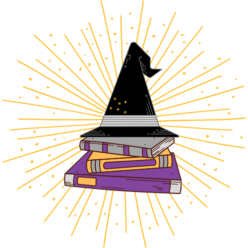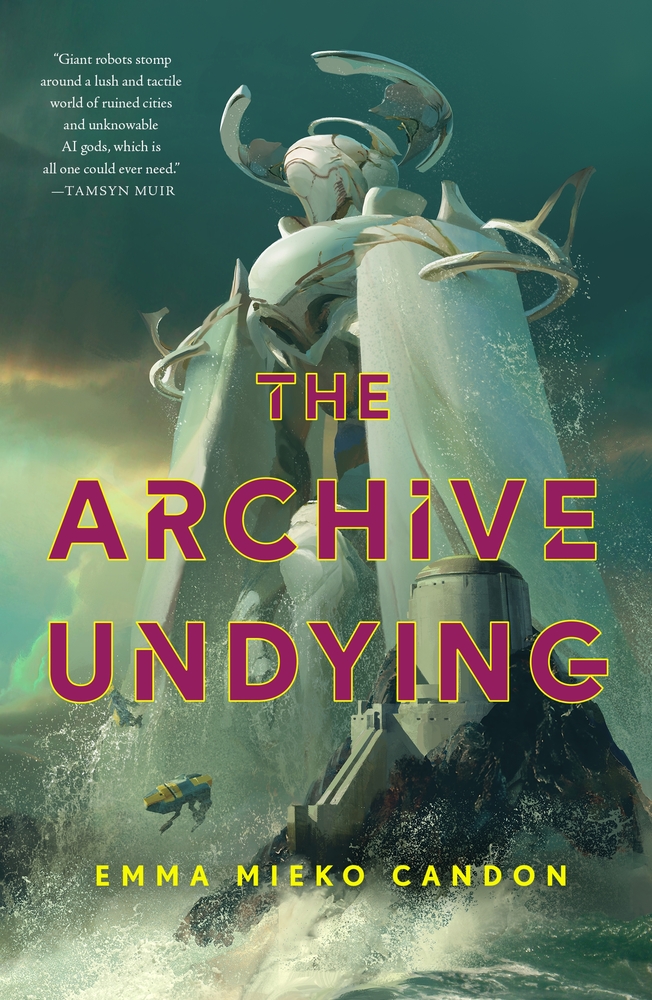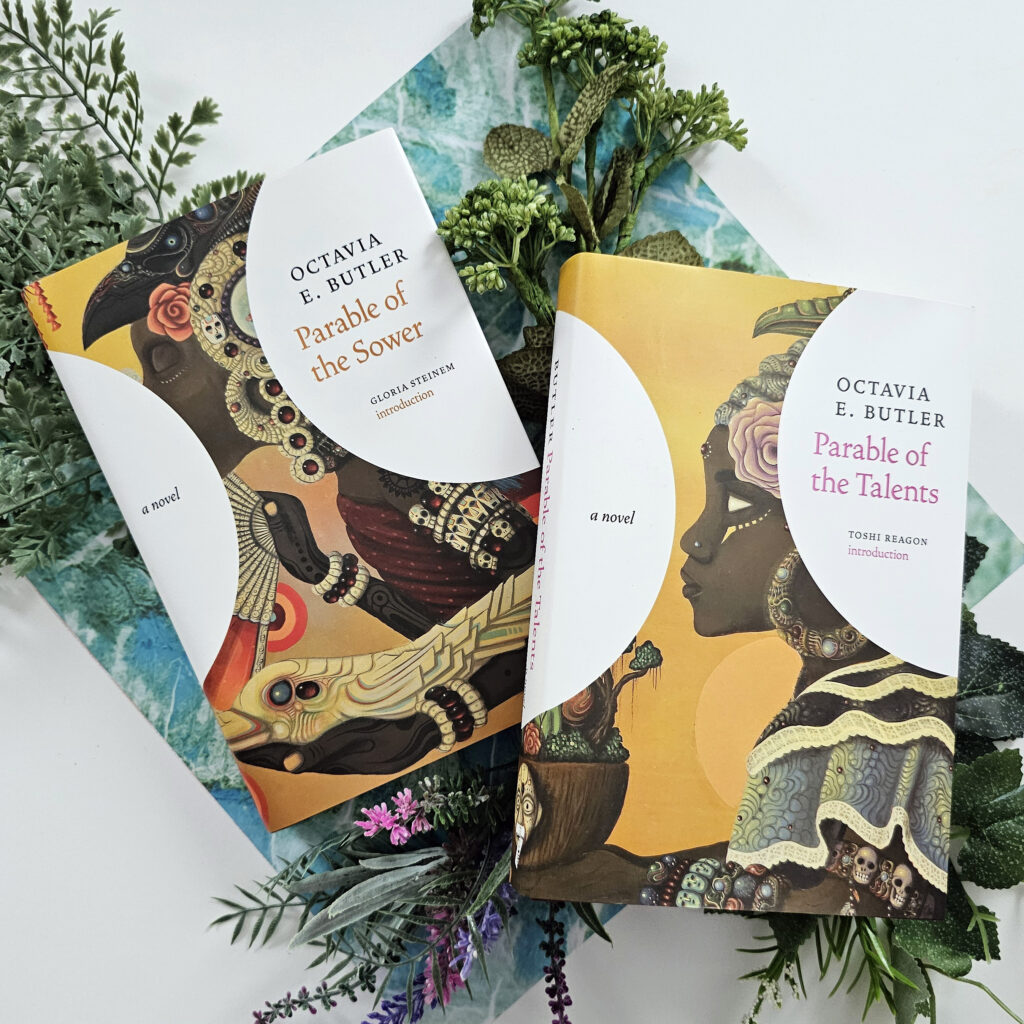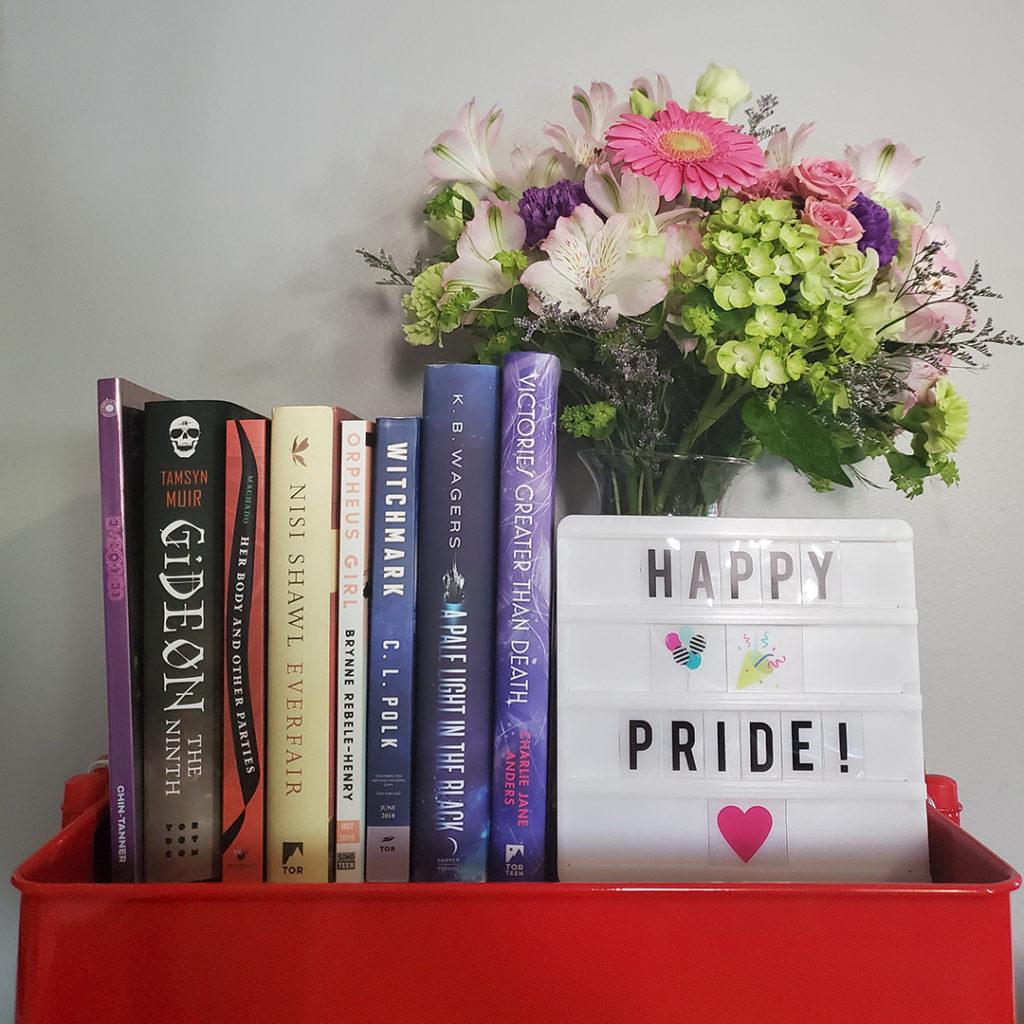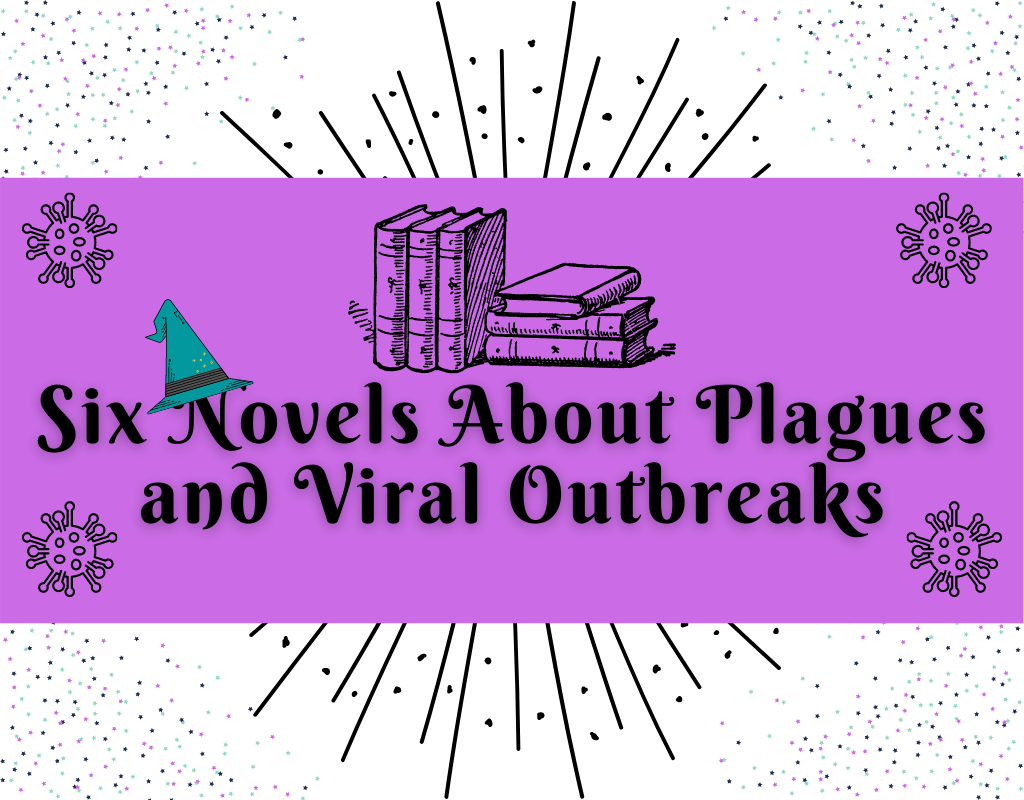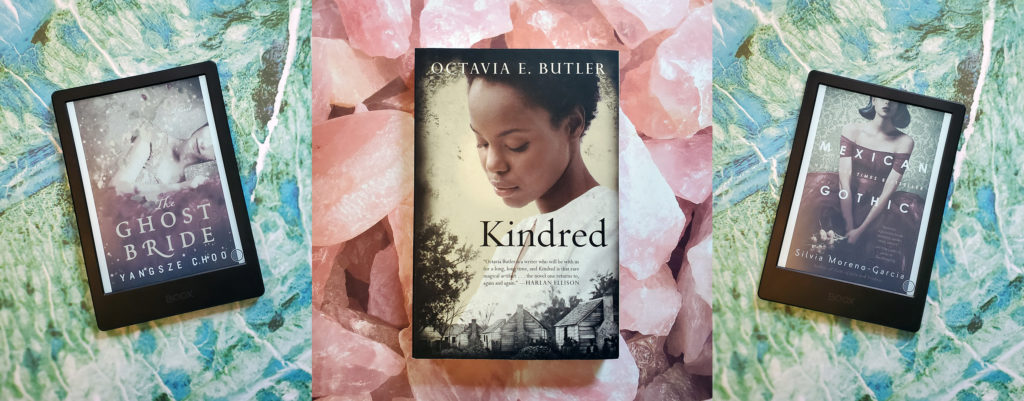The Best Book Nook is a new series of brief interviews with booksellers, librarians, publishing professionals, and other cool bookish people about their favorite books, their favorite places to read, and more!
This month’s featured reader is Liv Oszlak (she/they), a bookseller at Science Fiction-Bokhandeln in Gothenburg, Sweden. Be sure to follow them on Instagram and let them know if you read any of their recommendations!
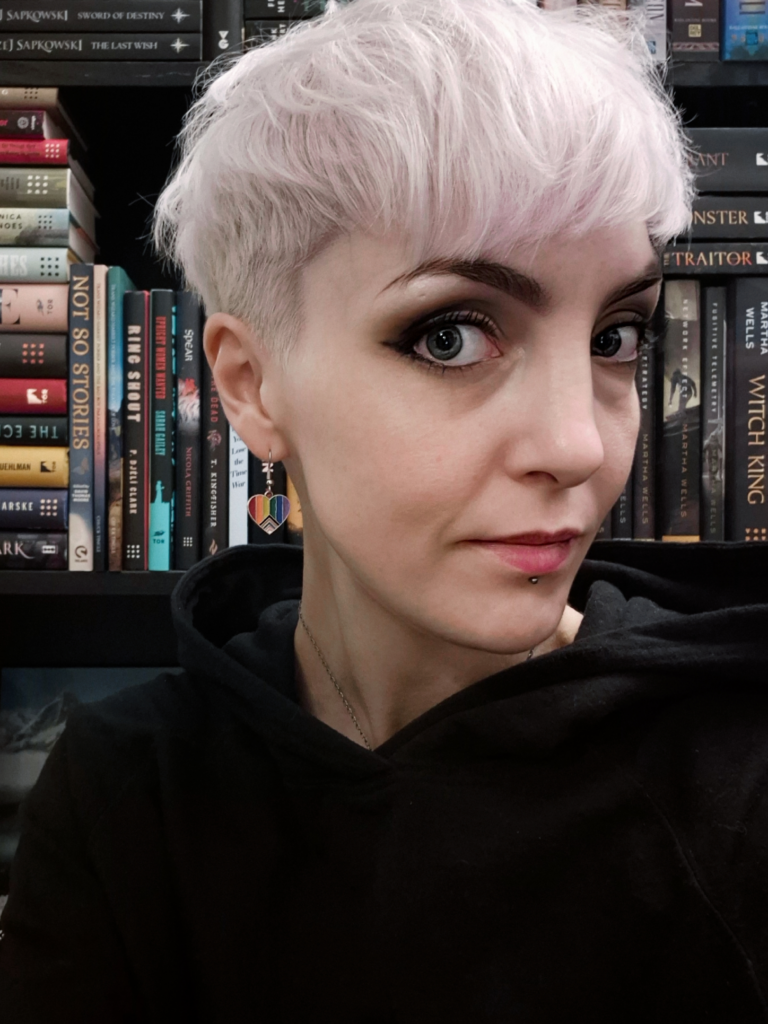
This post contains affiliate links to Bookshop.org, an online bookstore that financially supports independent bookstores.
What’s your best book nook or favorite place to read, real or imagined?
Liv: This is a hard question for me to answer. Location-wise, broadly, I’m not too picky, but when it comes to particulars, everything needs to be just right. What matters most to me is the ability to truly focus on my reading, which I often find difficult due to the fickle nature of my ADHD brain.
To find that focus, most of the time I need to be able to fully shut out the rest of the world. Wearing noise canceling headphones and listening to a carefully curated playlist of instrumental music helps with that, as well as closing any curtains so the room is not too bright.
The corner of any couch feels safe and calming to me, and I need to have my back against a wall. I sit with my knees pulled up to my chest, with a pillow between my stomach and thighs. I like the feeling of being “boxed in”—sort of reminiscent of being held, I suppose, but not too close. Lately, the break room at work has been perfect for reading during my lunch; it’s sufficiently dimly lit, it has a little alcove with a built-in couch and piles of pillows, and everyone respects the fact that wearing headphones means “don’t approach me, I’m recharging by escaping to another world.”
What snacks or beverages is your best book nook stocked with?
Liv: As a kid and well into my teens, I would make a huge pot of Russian Earl Grey tea first thing when I came home from school, secure it under a tea cozy and then enjoy cup after cup of it for hours while reading.
That is still my favorite way of enjoying tea with a book, but I’m also a hopeless caffeine addict who buys the biggest mugs I can find that will hold as much filter coffee with oat milk as possible, so I tend to alternate between those two. As for snacks, in Sweden, we have a specific brand of corn thins with chia seeds and sea salt which I adore; with a thin spread of butter, they taste like popcorn.
What was the first book of science fiction or fantasy that really had an impact on you?
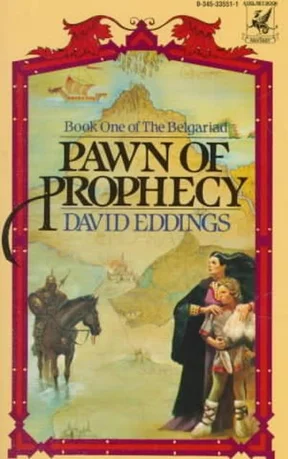
Liv: I have to say the entire Belgariad universe by David Eddings. Technically, I guess that’s cheating, but I really can’t say which individual book out of the thirteen impacted me the most. I started reading them when I was around ten years old, and the story just grabbed hold of me and refused to let go. I read them over and over to the point of knowing passages by heart. I read them so many times that my copies would literally break apart at the spine if placed in the hands of a careless reader.
Rereading them as an adult, it’s obvious why they captured me so entirely: It’s a simple story with pretty simple, likable, and relatable characters. The series follows a very typical fantasy arc, with not much room for interpretation when it comes to the separation between good and evil. That world was a predictably safe place for me to flee to when I couldn’t find safety in real life.
I was also deeply in love with Polgara the Sorceress, and to this day envision myself impossibly aging into sprouting raven black hair with a fashionable white streak through it, but that particular obsession is also something that young Liv didn’t reflect on; it was for adult Liv to unpack later, along with other female fictional crushes.
What have you read recently and loved?
Liv: I’m actually currently in the middle of my best reading experience in. . . ages? I can’t remember the last time a book utterly entranced me like this. I’m at the point where I’m making playlists of songs that remind me of its characters, which hasn’t happened since my teens. When I’m not reading, I think about these characters constantly and worry about them as though they were my real life friends whom I’m watching make terrible, awful, self-destructive, but fully understandable decisions.
The Archive Undying by Emma Mieko Candon has it all: fascinatingly complex people with hidden motivations, corrupted AI gods, deep themes of religious trauma and reforming one’s identity in the face of leaving religion behind, broad and wonderfully done representation. . . It’s queer, introspective, poetic, and incredibly romantic. It’s also the kind of book where the reader is unceremoniously thrown into its vast, weird new world with no safety net; in that way (and in others), it reminds me a lot of another favorite series of mine, The Locked Tomb by Tamsyn Muir.
You will spend a good amount of time trying to find your footing and figuring out what the hell is even going on and why. Then, piece by piece, as you get to know the characters and see the world through their eyes, the story puzzle is laid out before you, and it’s this beautifully heartbreaking, intrinsically human portrayal of damaged individuals crashing into each other’s lives while you’re constantly just hoping with all your heart that they will somehow heal each other and find happiness.
Oh, and also, it has giant robots. “Love” doesn’t cover half of what I feel for this book, and while I know it won’t be for everyone, it absolutely is for me.
What are you excited to read next?
Liv: At about 75% through The Archive Undying, I’m dreading leaving it behind, because I fear nothing I read immediately after will measure up to it. However, I have a good pile of books that I’m deciding between, and which all excite me: Bury Your Gays by Chuck Tingle, Brainwyrms by Alison Rumfitt, I Who Have Never Known Men by Jacqueline Harpman, Natural Beauty by Ling Ling Huang and Cuckoo by Gretchen Felker-Martin are at the top of that pile.
I have been trying to read some less depressing books after the brutal—and brilliant—gut punch of Tell Me I’m Worthless (also by Alison Rumfitt), but as I write this and consider my choices, I’m failing spectacularly. Well, it is what it is. . . I tend to gravitate towards darker narratives, and often find them cathartic. Hopefully my current read doesn’t end up breaking my heart completely (although who doesn’t like to have a good plot-induced cry, now and again? . . . Damn, I will probably regret saying that).
More About Liv Oszlak
I live in Gothenburg, Sweden, with my partner, and I’m currently studying full-stack Web Development at a vocational university. When I’m not reading, I like engaging in any one of my numerous hobbies, which include cosplaying for charity with the 501st Legion, arts and crafts (everything in every medium under the sun, truly), creating or listening to music, creative writing, escaping into vast open world RPGs, thinking perhaps a bit too deeply about media . . . and info-dumping to my partner and friends about my latest hyperfixation.
What’s your best book nook? I’d love to hear about it on Instagram, Threads, or Bluesky! And please give Liv a follow over on Instagram, too!
